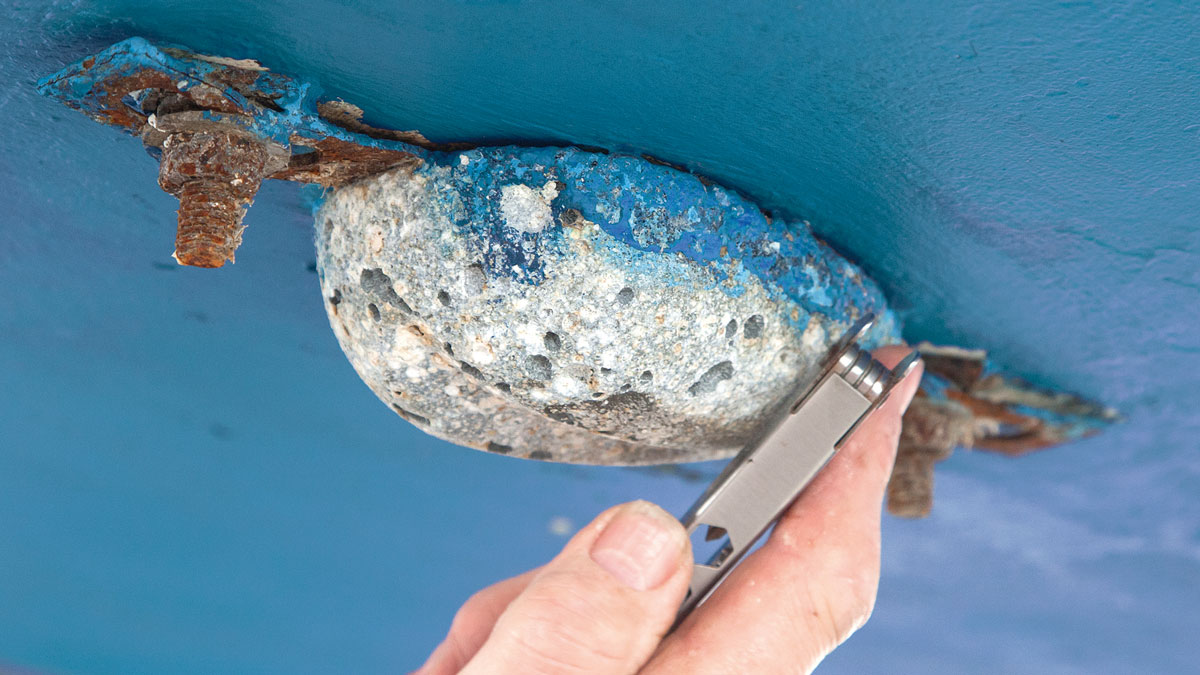What should you do if you're at sea and lightning strikes? Ben Sutcliffe-Davies has some advice
Over the years I’ve attended a few lightning strikes suffered by yachts on behalf of insurance companies.
In the UK it’s not such a common issue as, say, in the Mediterranean. That said, the ones I’ve seen have caused some spectacular damage.
Most production yachts that have iron keels do have earth straps from cap shroud and mast steps on to one of the keel fastenings.
My own yacht, being encapsulated, isn’t so easy to deal with simple earthing to water.
I don’t have any proof that a dissipator is better or worse than an unprotected mast, but since sailing in the Ionian I’ve certainly seen more storms brewing with stunning lightning.

Some people put their electronics in the boat’s oven to try to protect them. Credit: Graham Snook/YM
What I do know – from sailing with my father in storms and also from chewing over the risks with my friend John Goode – is to carry out the following:
Disconnect everything electrical ASAP. And that’s everything – VHF and aerials, radar, deck sockets, nav lights. John also goes one step further and disconnects the batteries.
Get your kedge anchor out and wrap the chain around the cap shrouds and lower the anchor deep into the water (another good reason why you should have 10m of chain!).
I have a keel-stepped mast so we’d wrap chain around the mast as well, and then overboard; the last thing you want is for lightning to go inside.
Continues below…
When lightning strikes – how to protect your boat from lightning at sea
Lightning never strikes twice – a turn of phrase often used to reassure someone who’s had a bad experience, implying…
Make a grounding system to protect your boat from lightning strikes
A surprising amount of research has been carried out into lightning strikes on yachts and boats, much of it in…
Boat anodes: a practical guide for sailors
Metallurgist Vyv Cox’s guide to anodes, explaining how they work, debunking the myths and showing ways of improving performance
Best corrosion protection method? Ask the experts
Bob Williams writes: “During a recent chat at my sailing club questions were discussed about anodes, galvanic corrosion and earthing,…
My father and I have always carried a set of long battery leads.
Being around boatyards you often find owners on swinging moorings have flat batteries so these are useful to jump-start a yacht.
In the case of a lightning storm, we would clip one end of the leads onto the cap shroud and the other end onto the kedge anchor.
As you know, lightning takes the shortest route to earth so a strike on the top of the mast would (fingers crossed!) run down the cap shroud and overboard rather than down the mast.
I’ve had customers report when dealing with claims that they have used the oven to put the VHF radio and handheld GPS in to try and protect them.
Unfortunately, I’ve no actual proof this works but the oven as a Faraday cage does make sense.
Enjoy reading Lightning strikes at sea – advice from a marine surveyor?

A subscription to Practical Boat Owner magazine costs around 40% less than the cover price.
Print and digital editions are available through Magazines Direct – where you can also find the latest deals.
PBO is packed with information to help you get the most from boat ownership – whether sail or power.
-
-
-
- Take your DIY skills to the next level with trusted advice on boat maintenance and repairs
- Impartial in-depth gear reviews
- Practical cruising tips for making the most of your time afloat
-
-
Follow us on Facebook, Instagram, TikTok and Twitter








